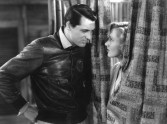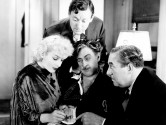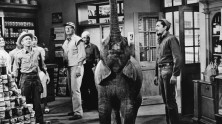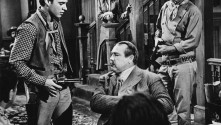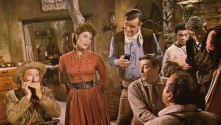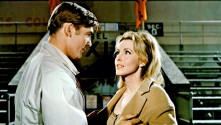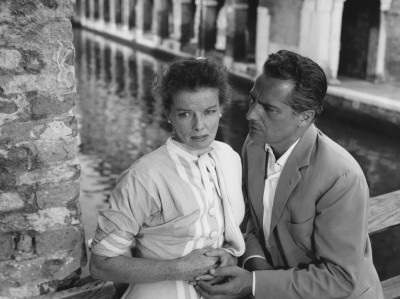
Prior to presenting any onscreen credits or production logos, Gentlemen Prefer Blondes offers the brash spectacle of Jane Russell and Marilyn Monroe singing in tandem against a garish violet backdrop, their ruby-red dresses glistening in contrast. It’s a suitably potent opening to Hawks’ delirious musical, a film whose stylistic excesses match the insatiable appetites of its two female protagonists. Russell’s Dorothy Shaw longs for love and sex, while Monroe’s Lorelei Lee gravitates towards money and shiny objects, and the film charts the teamwork they foster while aboard a Paris-bound luxury liner in helping each other achieve these desires—a mission ushered along by extravagant Jack Cole-directed musical numbers. Somewhat unique in Hawks’ oeuvre for its rapt focus on female friendship and yearning, the film is even more remarkable in its wholesale burlesquing of the dominant sex, represented here as a gallery of gullible buffoons that recall the cartoons of Frank Tashlin. Alternately analyzed in the decades since as sexist or feminist, unabashedly capitalistic or radical, Gentlemen Prefer Blondes remains a slippery product of the same consumer culture it ravenously sends up.
Part of film series
Screenings from this program
Gentlemen Prefer Blondes

His Girl Friday

The Big Sleep (pre-release version)

A Girl in Every Port

The Cradle Snatchers / Paid to Love

Fazil

Fig Leaves

Man's Favorite Sport?

The Crowd Roars

Today We Live


